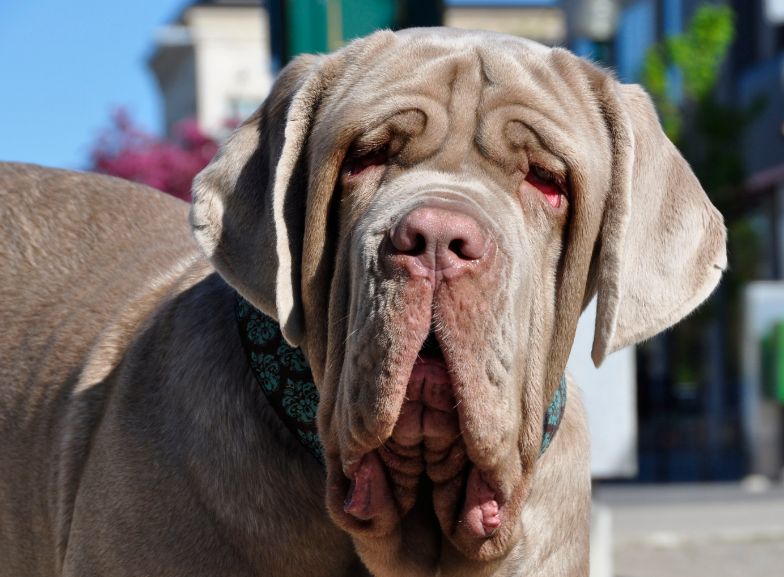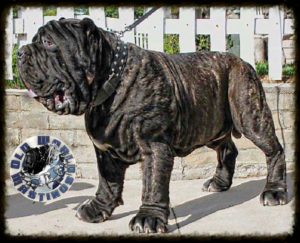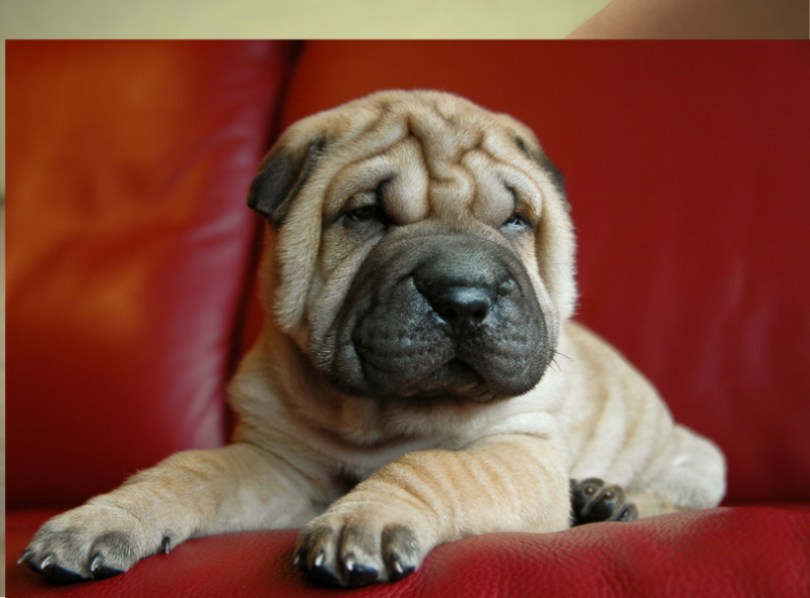 Neapolitan Mastiff or Tibetan Mastiff are giant pets and because of their large size can be intimidating Grooming And Bathing. The Neapolitan mastiff dog breed is a gentle giant that makes an excellent family pet. These dogs love their families unconditionally but are wary of strangers. There is no doubt these dogs will protect you from an intruder as their fearless and protective attitude is sure to frighten any unwanted visitors.
Neapolitan Mastiff or Tibetan Mastiff are giant pets and because of their large size can be intimidating Grooming And Bathing. The Neapolitan mastiff dog breed is a gentle giant that makes an excellent family pet. These dogs love their families unconditionally but are wary of strangers. There is no doubt these dogs will protect you from an intruder as their fearless and protective attitude is sure to frighten any unwanted visitors.
In general, Neapolitan mastiffs are relatively low-maintenance, easy-going pets. But, like all pets, these vast dogs have their quirks.
Breed Overview
- GROUP: Working
- HEIGHT: 24 to 31 inches
- WEIGHT: 110 to 150 pounds
- COAT AND COLOR: Neapolitan mastiffs can appear black, blue, mahogany, and tawny in tone. They may also have a brindle pattern on their short skin.
- LIFE EXPECTANCY: 7 to 9 years
Characteristics of the Neapolitan Mastiff
- Affection Level High
- Friendliness Medium
- Kid-Friendly High
- Pet-Friendly Medium
- Exercise Needs Medium
- Playfulness Low
- Protectiveness High
- Energy Level Low
- Trainability Medium
- Intelligence Medium
- A tendency to Bark Low
- Amount of Shedding Medium
History of the Neapolitan Mastiff
The Neapolitan mastiff tales and images go back as early as 700 B.C. So if Mastinos look like strange visitors from antiquity, it’s because that’s what they are.
The breed might go back as far as 700 BC, with artefacts from several ancient civilizations depicting Mastino-like canines and Tibetan Mastiff.
In the Roman Empire, they found employment as war dogs, gladiators, and guardians. The bestial looks and massive frame were calculated to throw the fear of Jove into their adversaries.
Today, those attributes are still terrifying enough to send an ill-willed intruder running for the hills.
In fact, you can thank Alexander the Great for their great reverence and good looks.
The Breed Known As The Molossus
In the fourth century B.C., he crossed his famous giant war dogs with short-haired Indian dogs.

And create a breed known as the Molossus, which he used in battle. The breed is also known as Tibetan Mastiff.
The Romans took note and later adopted the Molossus breed for their own use.
They eventually crossed them with other large breeds to create an even bigger and intimidating canine for combat and hunting.
Farmers in southern Italy selectively bred the Mastino. It is to develop a large size with loose, saggy skin and a smooth coat.
In their selective breeding, they also aimed to create a more family-friendly dog.
The Mastino while still being a top-notch guard dog and protector.
This breed became known as the Neapolitan mastiff, and Tibetan Mastiff named after its origin city of Naples and Tibetan.
The dog soon became a national treasure in Italy.
Six of them were reportedly shown in the first dog show in Naples in 1946.
Italian painter Piero Scanziani drafted the breed standard in 1948.
The Italian Kennel Club officially recognized the breed the following year.
The breed spread throughout Europe in the 1970s and soon made its way to America.
The United States Neapolitan Mastiff Club became the primary register for the species in the 1990s.
The American Kennel Club officially accepted the Neapolitan mastiff into the Working Group in 2004.
Neapolitan Mastiff grooming And bathing
While Neapolitan mastiffs can be couch potatoes, you should still walk yours at least twice daily.
They do not require many exercises, but regular walks are crucial for managing weight and joint health.

Puppies
As puppies, this giant breed is a different story. Neapolitan mastiff/Tibetan Mastiff puppies are generally energetic and playful.
It is up to you to know when enough is enough. Because the bones are so big, joints can be easily damaged.
To prevent this, limit your puppy’s running and jumping activity.
And make sure they do not climb upstairs too quickly. Keep an eye on them, especially in warm weather.
They are prone to overheat and stop play before your pup gets too tired.
Training your Neapolitan mastiff/Tibetan Mastiff should begin as soon as possible.
Preferably during puppyhood. As this species gets older, individuals can become stubborn and difficult to train.
It is essential to get on top of things early.
Socialization Training
Because they are wary of strangers and naturally suspicious of outsiders, socialization training is critical.
Take your Neapolitan mastiff/Tibetan Mastiff to public spaces like the park or a neighbourhood cafe regularly.
The dog can learn how to welcome guests appropriately and distinguish between friend and foe.
Neapolitan mastiffs are not responsive to negative reinforcement or punishment.
The dog responds well to lots of love and treats to reward any good behaviour during training.
Neapolitan Mastiff Grooming And Bathing
During Neapolitan mastiffs grooming and bathing, the same is true—treat them with love when they resist bath time.
Enormous, muscular, and wrinkly, the Neapolitan mastiff grooming and bathing seems like a challenge to keep clean.
Neapolitan Mastiff Grooming and bathing weekly or just brushing will make things easier, keep their coat clean, and manage to shed.
Amazon best dog Brush for Neapolitan mastiffs
With regular brushing, you can keep baths on an as-needed basis.
Just make sure to wipe their wrinkles down.
Dry them thoroughly—daily to remove any dirt or other unwanted debris.
Regular nail trimming, ear cleaning, and teeth brushing will also enhance your Neapolitan mastiff’s overall health and wellbeing.
And do not forget to keep a slobber rag handy.
You can find the best:
- Best Amazon Nail Trimming for Neapolitan mastiffs
- Ear Cleaning for Neapolitan mastiffs in Amazon
- Amazon Best Teeth Brushing for Neapolitan mastiffs
- Slobber Rag for Neapolitan mastiffs in Amazon
Common Health Problems
The Neopolitan Mastiff is susceptible to several ailments:
- Hip dysplasia
- Arthritis
- Bloat
Joint health is a concern for Neapolitan mastiffs due to their large size.
With all of their extra skin and big muscles, their joints are carrying a lot of weight. So when assessing your dog’s health, make sure to ask your vet for a hip and elbow evaluation.
Also, deep-chested dogs are prone to getting a bloat condition, which happens when they eat or drink too quickly.
Their stomach can twist and fill with gas, which can sometimes rupture their stomach or cause damage to other organs.
Bloat can be prevented by keeping feeding portions small and frequent or using a “slow feed” Amazon Slow Feed bowl.
Diet and Nutrition
The nutrition requirements of a Neapolitan mastiff are not significantly different from those of other pets.
They should be fed a high-quality diet and provided fresh water at all times.
To find quality dog food, check the first ingredient. For example, the Amazon healthiest foods for Neapolitan mastiffs list a protein source, like chicken or beef.
Avoid foods with lots of fillers like animal by-products and pulp that lack essential nutrients.
Natural, whole ingredients are best for your dog’s digestive system.
According to the American Kennel Club, experienced Neapolitan mastiff breeders recommend slightly higher fat in fat and lower protein, especially for younger dogs who multiply. Discuss any diet and nutrition concerns with your veterinarian.
The Best Giant Dog Breeds That Make Great Pets
- Pros
- Loyal, protective guard dog
- Mellow, gentle with its family
- It does not require too much exercise
- Cons
- Prone to joint disease due to its large size
- May become stubborn and difficult to train with age
- Wrinkles need regular cleaning of dirt and debris
